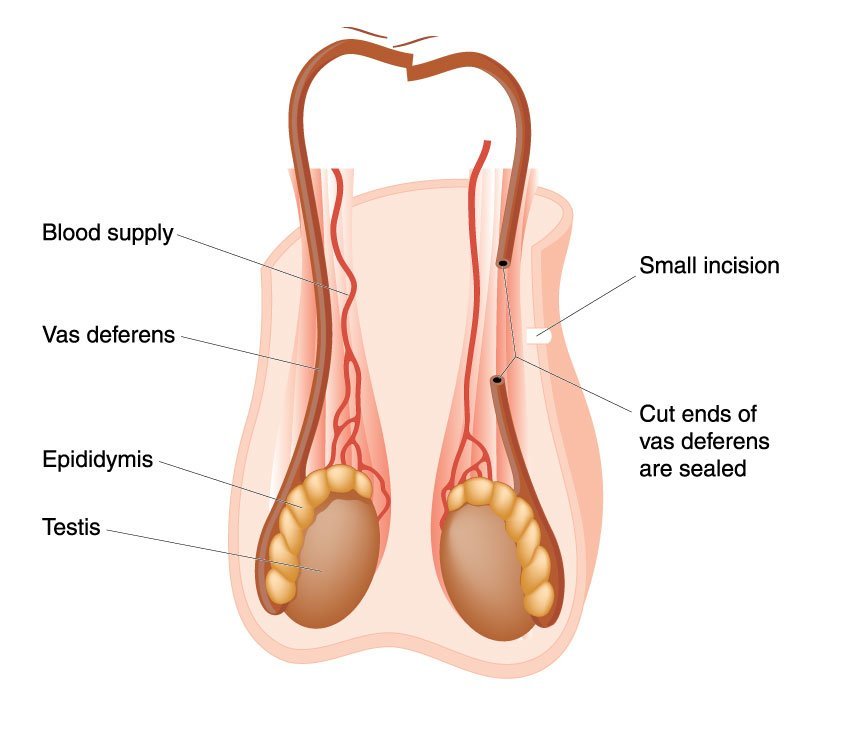It is not just women who can have blocked tubes, men can suffer from blockages within the vas deferens or epididimus caused, for instance, by past bacterial infections, or voluntary sterilisations where the vas deferens are severed. Sometimes sterilisations and blockages can be reversed and sometimes it is better to surgically retrieve sperm instead.
Blocked Vas and Vasectomies

How Does a Vasectomy Work?
Vasectomies are intended as a permanent form of sterilisation. Sperm are produced in the testicles then travel through the vas deferens to the epididimus where they mature for about a month. In a vasectomy the passage through the vas deferens is blocked and the sperm are reabsorbed by the body. The blockage can be by means of cutting and stitching, cauterisation, clamping, or repositioning the cut ends either side of a piece of testicular tissue. The procedure is relatively quick and simple. There used to be a removable (by surgery) clamp available but this had a high failure rate and is no longer used.
Does Vasectomy Reversal (Varicocelectomy) Work?
In a vasectomy reversal the surgeon tries to reconnect the interrupted vas deferens. It can be seen that the level of difficulty of this is affected by the vasectomy method originally used. In any case it is a more complex procedure than the original vasectomy. In fertility terms, the problems with a vasectomy reversal are twofold. Firstly, it may simply not work and the vas deferens may not be restored. Secondly, the quality of the sperm is usually diminished in terms of sperm count and sperm motility. There can also be raised levels of antisperm antibodies present. Furthermore, the longer the vasectomy has been in place, the poorer quality are the sperm likely to be produced.
Urologists often have a different definition of success to fertility doctors. They may regard success as an improvement in sperm flow, whereas fertility doctors will not regard this as relevant unless it improves significantly enough to alter the fertility treatment necessary to produce a pregnancy.
Fertility Treatment After a Vasectomy
Fertility treatment where sperm quality is poor is IVF with ICSI. This usually achieves similar success rates to IVF with normal sperm. The sperm can be retrieved from a sample produced normally by ejaculation or by surgical retrieval from the testes. Depending on circumstances we would normally suggest that men with vasectomies have the surgical sperm retrieval. There is usually sufficient sperm retrieved from such procedures to allow several cycles of fertility treatment.
Cryopreservation Before a Vasectomy
An option men should consider is to produce a sperm sample before their vasectomy and cryopreserve it. This would allow their partners to have fertility treatment later without surgical sperm retrieval. It would also imply better quality sperm as the negative effects on quality caused by the vasectomy would be avoided. Of course, a vasectomy is regarded as permanent sterilisation so men may not consider that they need to cryopreserve. But many do change their minds, or their partners, and do require fertility treatment.
